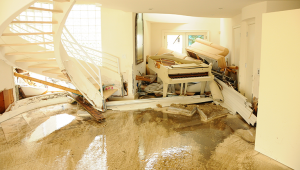Spring in lots of parts of the nation is well known for stormy weather and tornado activity. Current weeks brought enormous rain, wind and hail storms throughout parts of the United States. These storms have proved destructive on many fronts, causing comprehensive property damage due to strong winds, heavy rains, flooding and overflowing storm drains.
Tornadoes are typically accompanied by brutal winds, hail and relentless rain. These storms damage roofing systems, skylights, trees, fences, structures, and anything else that is in their method. Agile winds toss vehicles and trucks as though they are mere cardboard boxes. They toss roofing system shingles off homes and let rain and hail cause damp carpets, ceilings, floorings, and furniture. Rainstorms flood basements and crawl spaces bringing about tremendous water damages and financial issues to property owners. The end outcomes of twisters, massive winds and rainstorms are usually paths of destruction and catastrophe stricken communities.
Not all water devastation from these storms can be prevented. Nevertheless, there are methods to minimize potential water damage in your house. Most significantly, homeowners require to know that routine home maintenance and storm readiness are the first steps in residential or commercial property and personal security. Although it is impossible to prevent wind and rainstorms, it is possible to lessen the effect of water damage coming from these storms.
Before the rainy season begins and after each considerable wind, hail or rainstorm, inspecting both outdoors and inside the home and making necessary repair work may determine how well the house fares in a future storm situation. Outside the house, checking the gutters to make sure they are not blocked with dried leaves and debris should be included in a fundamental home maintenance routine. Homeowners must take a look at the roofing to make sure there are no loose or missing shingles. Roofing system inspection also includes examining the flashing around the chimney to ensure it is tight and will not let water leak in. Also, the ground around your house should be sloping away from the house, otherwise, rainwater will pool around your home, potentially damaging the structure, triggering flooding and water damage to happen. Cracks both externally and internally must be caulked and sealed well, to prevent water from seeping in.
Inside the home, inspecting and keeping appliance water line connections, such as cleaning maker, dishwasher, and fridge pipes regularly goes a long way toward lessening the potential for water damages. Toilets, sinks, showers, and tubs need to be regularly checked for leakages along with mold discoloration and moldy smells. Any staining on walls or ceilings need to be examined and attended to since it could be a sign of water leakages. Water heater last approximately eight to twelve years. However, they may end up being rusty and might leakage at any time, so a drain pan leading to an external outdoors drain is a must. Calling an expert water damage remediation contractor to inspect the premises and offer recommendations and tips about required repair work is a wise and worthwhile financial investment.
Not all water damages from storms and flooding will be entirely removed with a home maintenance routine, but routine care will go a long way in many cases to reduce potential damage. Twisters and the massive wind, hail and rain storms that accompany them can trigger remarkable damages to homeowners, towns, and towns. Taking an obligation for one’s home will decrease lots of undesirable storm and flooding circumstances. However, when faced with water damage emergencies, expert water damage restoration companies can remove, dry and clean up floods and repair the facilities to pre-emergency conditions.

